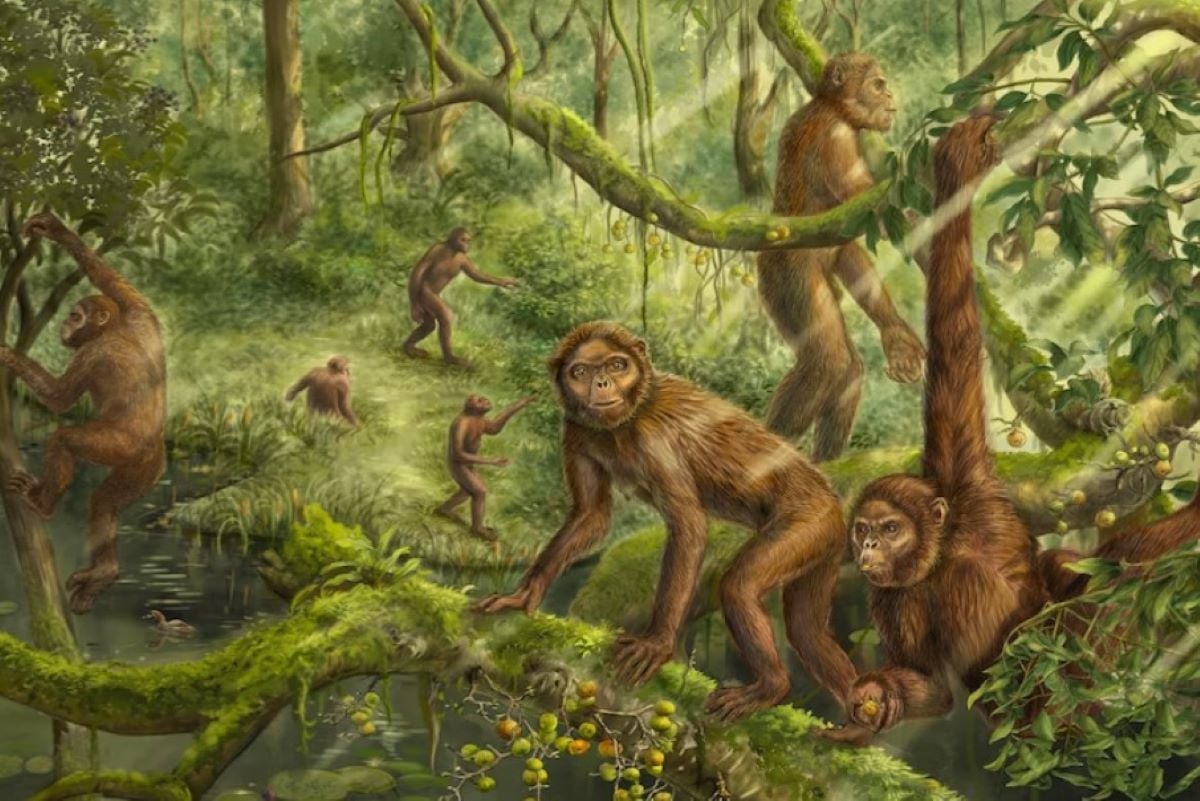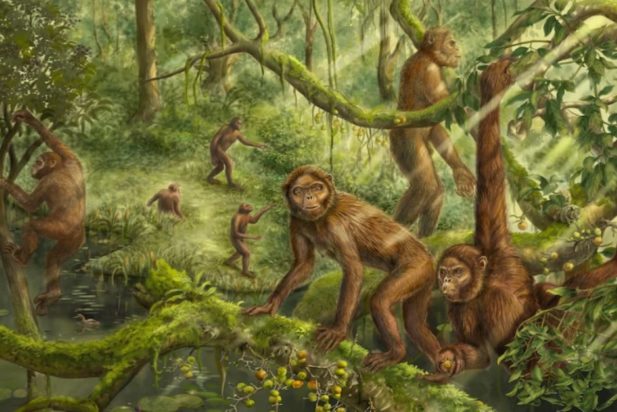

A representation of the locomotor behavior of the extinct ape Lufengpithecus and its environment. Illustrated by Xiao Kongguo. Source: Shijun Ni, Institute of Vertebrate Paleontology and Paleoanthropology, Chinese Academy of Sciences
The ability to walk on two legs is one of the mysteries of our species. new Stady Based on a 6-million-year-old monkey fossil, they found one answer – a surprise.
Despite the efforts of biologists, we have yet to find a completely convincing explanation for why people walk upright. According to the study, scientists were able to answer based on the inside of a fossil monkey's ear.
How did the monkey's ears help it walk upright?
In the study published in the journal The Innovation, researchers in the United States and China studied the bony inner ear canal of a fossil skull of a monkey from Asia during the Miocene period. the The monkey is called “Lufengpithecus” It is an extinct species of monkey.
Scientists used 3D CT scans to study his ear. The inner ear in vertebrates contains three semicircular canals filled with fluid “They are sensory organs important for balance and posture (body position).” One of the study's authors and NYU Professor Emeritus of Biological Anthropology, Terry Harrison, said:
He also showed that this sense of balance and posture coincides with agility in all vertebrates. “If you are more flexible or slower, you have a slightly different structure in your inner ear,” the professor said.
To further understand this relationship, the researchers compared the fossil's inner ear bones with those of orangutans, African apes, chimpanzees, and other primates.
In addition, they compared the way each species moves. It is known that the first monkeys on planet Earth moved through trees the way they did Modern gibbon in Asia.

The last common ancestor of humans – apes answers why we arrived at bipedalism
The last common ancestor between humans and apes climbed, walked while hanging on branches, and walked on all fours on the ground. As did Lufengpithecus species. This appears to have been the starting point that led to humans becoming bipedal.
However, the fossil record has gaps, making it difficult to trace the evolutionary origins of Lovingpithecus. But this result suggests that General kinetic characteristics The postural features of apes existed before humans walked upright.
Change in the evolutionary process of apes
Next, researchers had to figure out why monkeys evolved in the first place. Terry Harrison makes another surprising assumption, which offers a possible answer to this question.
As the professor mentioned 3.2 million years ago The cooling period began on Earth. This meteorological shift, which caused the accumulation of glaciers in the Northern Hemisphere, set off a chain reaction in the evolutionary process. Terry Harrison reports that this chain reaction created “a real upward trend in the rate of evolutionary change.”
This change appears to have favored animals that moved upright. Those whose biological systems were ready for this transformation lived longer than those who did not.
Knowing that this fossil, Dating back to 3 million years before the Earth's cooling period, These specialized auditory resources would have been an important element in this accelerated evolution and may have helped promote bipedalism.
“The ear area tells us something about motor behavior.”
It should be noted that further study of the fossil record is needed to observe how these hearing aids evolved over 3.16 million years and to support this hypothesis with evidence.
“The ear area tells us something about motor behaviour. Motor behavior is guided by the environment the animal is in. If you have a changing environment, you usually have to adapt your motor behaviour.Terry Harrison noted.
Those Fossil species, of course, have large gaps. Scientists can be used in their studies through a three-dimensional representation to find out how these animals evolved while humans were learning to walk on two legs.

“Avid problem solver. Extreme social media junkie. Beer buff. Coffee guru. Internet geek. Travel ninja.”





More Stories
Big development for Resident Evil 9!
One UI 6.1: Samsung's important update will be rolling out from today – devices that support it
Download Epic Games Store Easter games absolutely free